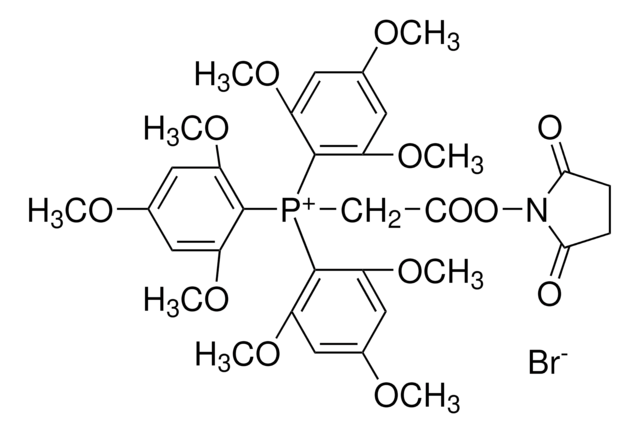LYSC9001
Lys-c (lysyl-endopeptidase), Active
from Achromobacter lyticus, recombinant, expressed in E. coli (206-473aa), tag-free, powder
Synonyme(s) :
API, Lysyl endopeptidase, Protease I
Se connecterpour consulter vos tarifs contractuels et ceux de votre entreprise/organisme
About This Item
Produits recommandés
Description générale
Recombinant tag-free Achromobacter lyticus Lys-c (lysyl-endopeptidase) (206-473aa) was expressed in E.coli cells.
Overview
Lysyl-endopeptidase (Lys-c) was isolated from the Gram-negative soil bacterium Achromobacter lyticus by Msaki et al. The protein hydrolyzes amide and peptide ester bonds at the carboxylic side of lysine and S-aminoethylcysteine residues making it an important tool for enzymatic protein sequencing and Lys-X compound synthesis.
Overview
Lysyl-endopeptidase (Lys-c) was isolated from the Gram-negative soil bacterium Achromobacter lyticus by Msaki et al. The protein hydrolyzes amide and peptide ester bonds at the carboxylic side of lysine and S-aminoethylcysteine residues making it an important tool for enzymatic protein sequencing and Lys-X compound synthesis.
Spécificité
This enzyme hydrolyzes amide and peptide ester bonds at the carboxylic side of lysine and S-aminoethylcysteine residues, at a catalytic pH range of 9.0-9.5, catalytic temperature range of 30-37 °C.
Application
The enzyme functions optimally between 30-37 °C and suffers from degradation when subjected to temperatures above 50 °C. Lysyl-endopeptidase retains complete activity after incubation in 4M urea or in 0.1% SDS solution for up to 6 hours at 30 °C.
Conditionnement
1mg/ml in Plastic
Notes préparatoires
Catalytic pH range 9.0-9.5. Catalytic temperature range 30-37 °C.
Reconstitution
Reconstitute in sterile water.
Stockage et stabilité
Store product at -20°C. For most favorable performance, avoid repeated handling and multiple freeze/thaw cycles once the protein has been resolubilized in sterile water.
Autres remarques
For R&D only.
Mention d'avertissement
Danger
Mentions de danger
Conseils de prudence
Classification des risques
Eye Irrit. 2 - Resp. Sens. 1 - Skin Irrit. 2 - Skin Sens. 1
Code de la classe de stockage
11 - Combustible Solids
Classe de danger pour l'eau (WGK)
WGK 3
Certificats d'analyse (COA)
Recherchez un Certificats d'analyse (COA) en saisissant le numéro de lot du produit. Les numéros de lot figurent sur l'étiquette du produit après les mots "Lot" ou "Batch".
Déjà en possession de ce produit ?
Retrouvez la documentation relative aux produits que vous avez récemment achetés dans la Bibliothèque de documents.
Notre équipe de scientifiques dispose d'une expérience dans tous les secteurs de la recherche, notamment en sciences de la vie, science des matériaux, synthèse chimique, chromatographie, analyse et dans de nombreux autres domaines..
Contacter notre Service technique









